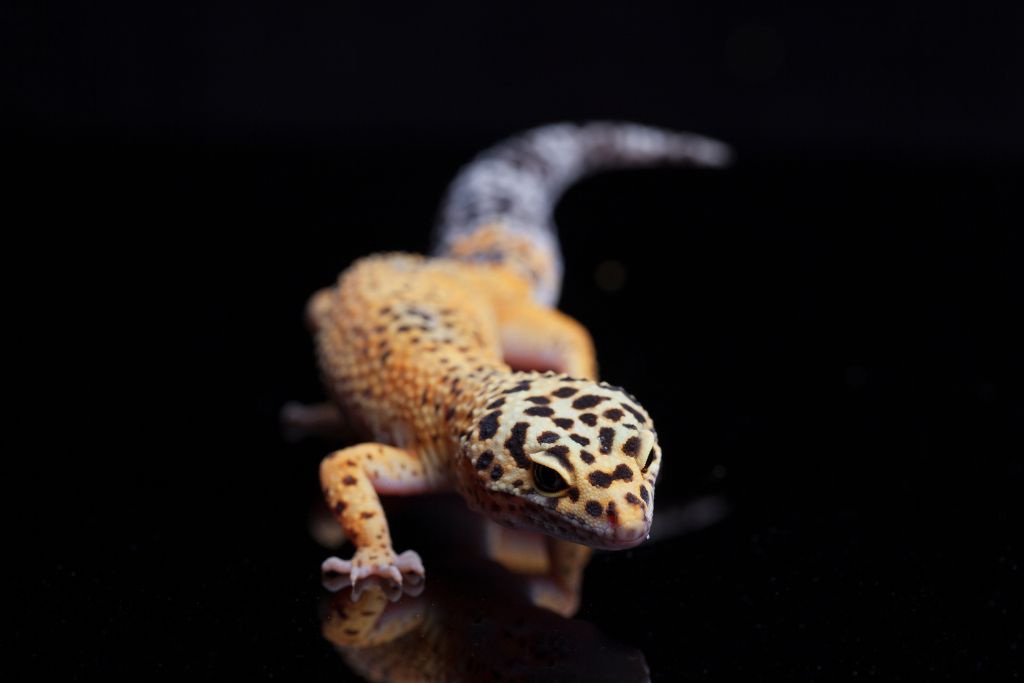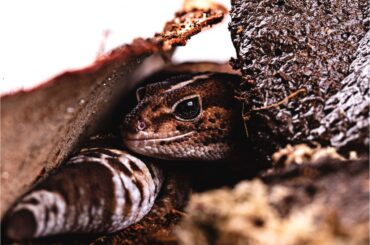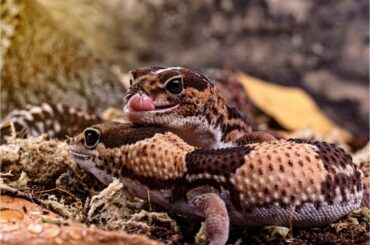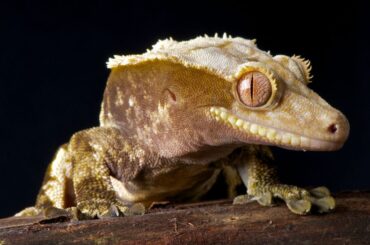Why does your leopard gecko wag its tail? What messages is it trying to convey? Could this behavior indicate something crucial about its well-being? These questions often intrigue pet owners and reptile enthusiasts alike.
Leopard gecko tail wagging serves as a fascinating form of communication. It’s not just a random movement; it’s a behavior rich in meaning. From signaling stress to showing excitement, each wag tells a unique story.
Understanding this tail language is vital for anyone who owns or plans to own a leopard gecko. It helps you better care for your pet and ensures the little creature’s happier, healthier life. So, let’s dive in and decode the mystery behind those wiggles and wags!
What is Leopard Gecko Tail Wagging?
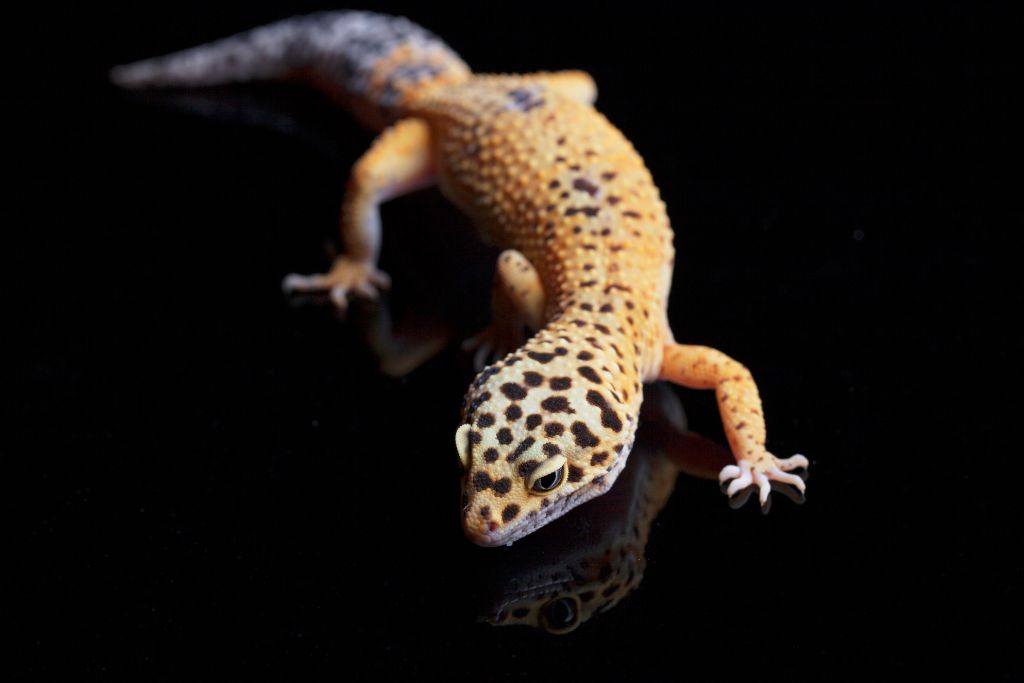
Leopard gecko tail wagging is the side-to-side movement of the gecko’s tail. It’s not just a simple flick; it’s a specific kind of motion that can mean different things in different contexts. This wagging can be slow or fast, subtle or obvious.
Unlike other gecko species, leopard geckos have their unique tail language. Some geckos drop their tails as a defense mechanism, but leopard geckos use their tails to communicate various emotions and states. This makes them stand out in the gecko world.
It’s crucial to know the difference between tail wagging and other behaviors. For instance, a rapidly shaking tail might mean excitement, while slow wagging could indicate stress.
Misinterpreting these signs can lead to improper care or even health issues for your pet. So, understanding the nuances of tail wagging is critical to being a responsible leopard gecko owner.
Reasons Behind Leopard Gecko Tail Wagging
Why does a leopard gecko wag its tail? Is it a sign of happiness, stress, or something else? Let’s explore some of the key reasons behind this intriguing behavior.
Leopard Gecko Defensive Posture: Tail Wagging as a Warning
Tail wagging often serves as a defense mechanism for leopard geckos. Leopard geckos wag their tails when sensing danger. This action can throw off predators. Reptile behavior experts confirm that this tactic often allows the gecko to flee safely.
Communication
Communication plays a role in tail wagging, too. Leopard geckos use this behavior to interact with each other. For example, they wag their tails to claim territory or establish a pecking order. If you notice your gecko’s tail in motion, it could be communicating with another gecko.
Territorial Behavior
Some experts believe that tail wagging helps leopard geckos mark their territory. When another gecko gets too close, the resident gecko may start wagging its tail as an apparent “stay away” signal. This behavior is often observed in captive settings where multiple geckos share the same space.
Leopard Gecko Wagging Tail When Eating: Is It Excitement or Something Else?
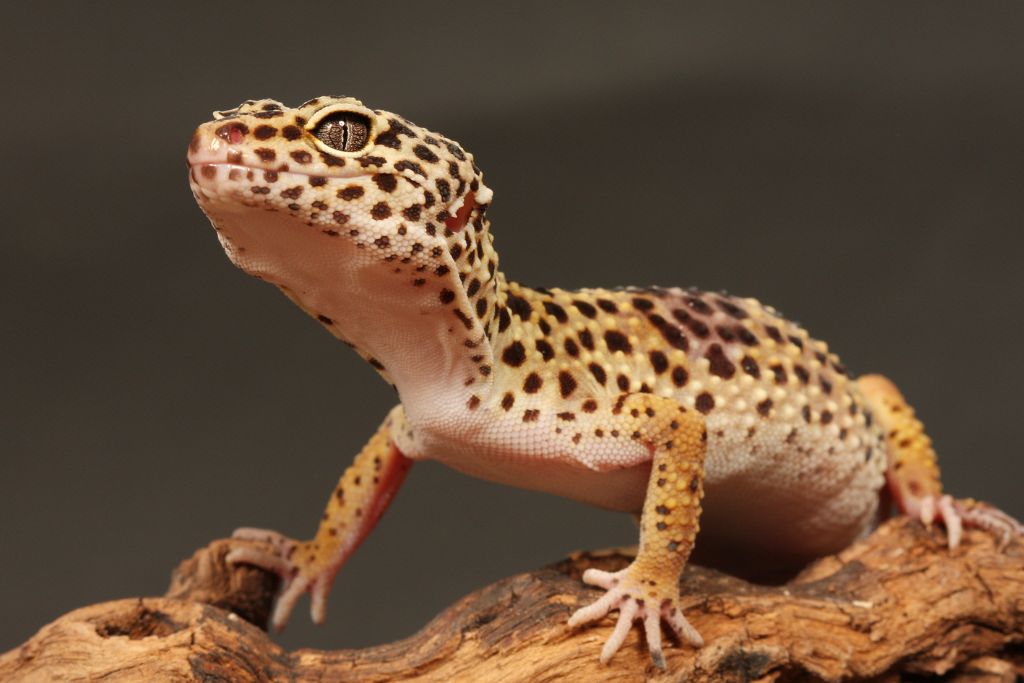
Mealtime often triggers tail wagging in leopard geckos. While it’s tempting to think they’re just excited about food, the wagging might have a deeper meaning. Some experts suggest that the tail movement could be a way for the gecko to balance itself while eating or to signal that it’s occupied and shouldn’t be disturbed.
Stress or Agitation
Tail wagging can also signal stress or discomfort, especially in captive settings. If you notice your leopard gecko wagging its tail more frequently, it might be time to evaluate its living conditions. To reduce stress, ensure the enclosure has plenty of hiding spots and maintains the right temperature and humidity levels.
Contentment and Health
Slow, rhythmic tail wagging often suggests a content and healthy leopard gecko. Unlike rapid or erratic movements, a leisurely wag usually means your pet feels secure and comfortable in its environment. Keep an eye out for this type of tail movement; it’s a good sign you’re doing something right as a pet owner.
Tail Wagging vs. Tail Loss
Tail wagging and tail loss are two very different behaviors in leopard geckos. While wagging is a form of communication or emotional expression, tail loss, or “autotomy,” is a defense mechanism.
When a leopard gecko feels highly threatened, it can drop its tail to distract predators and quickly escape.
The ability to lose and regrow a tail is fascinating but should not be taken lightly. Losing a tail is stressful for the gecko and requires energy to regrow. So, understanding the difference between wagging and tail loss is crucial for providing the best care for your pet.
Observing and Responding to Tail Wagging
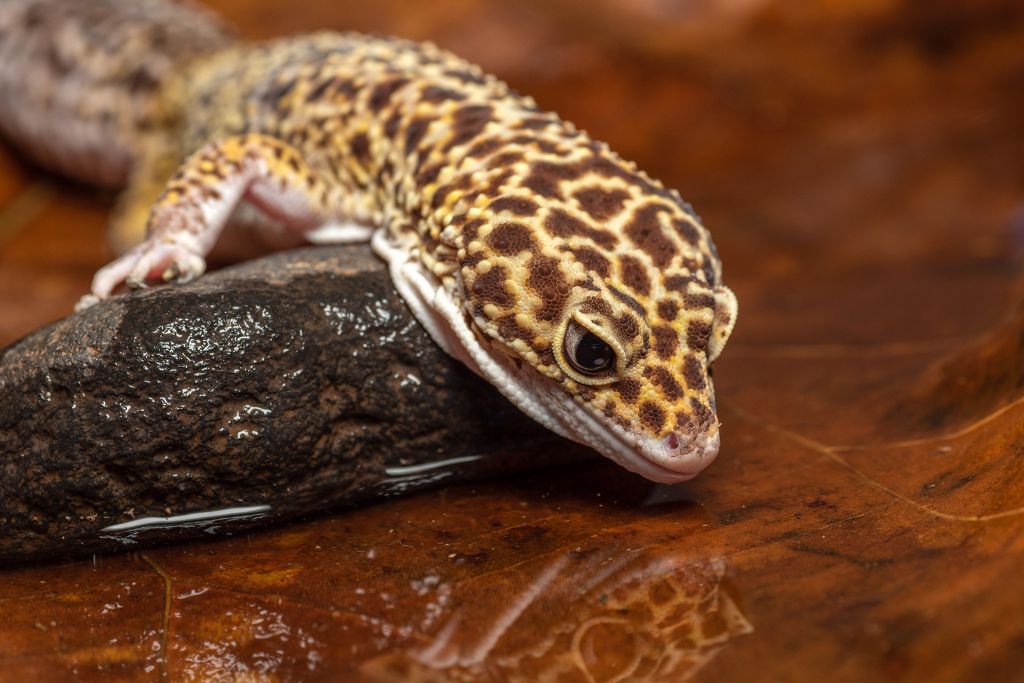
So, you’re keen to understand what your leopard gecko’s tail wags mean. Observing and interpreting these movements can deepen your bond with your pet. Let’s delve into some tips for stress-free observation.
Here’s how you can observe your pet without causing any stress:
Maintain a Respectful Distance
Keeping a safe distance from your gecko is crucial. If you get too close, the animal might feel cornered and display stress behaviors instead of natural tail wagging. A distance of about two to three feet usually works well. This way, you can observe without intruding on your pet’s comfort zone.
Use Dim Lighting
Bright lights can make your gecko anxious. A dimly lit room or using a soft light source helps create a relaxed atmosphere. This setting allows your gecko to behave more naturally, making your observations more accurate.
Be Patient
Observation takes time. Rushing can lead to mistakes or misinterpretations. Spend at least 15 to 20 minutes watching your gecko. This time frame usually provides a good window into its behavior, including tail wagging. The more time you spend, the more you’ll understand your pet’s unique tail language.
Proper Responses
You’ve observed your leopard gecko’s tail wagging, but what’s the next step? Knowing how to respond appropriately is crucial to your pet’s well-being. Let’s look at some guidelines for interpreting and reacting to this behavior.
- Identify the Context: Look at what’s happening around your gecko. Is it mealtime, or is another gecko nearby? Context can help you understand the reason behind the wagging.
- Adjust the Environment: If the tail wagging seems stress-induced, consider changing the enclosure. Add more hiding spots or adjust the temperature and humidity.
- Consult a Vet: Persistent tail wagging or wagging accompanied by other concerning behaviors warrants a vet visit. It’s better to be safe and get professional advice.
- Avoid Sudden Movements: If the wagging appears defensive, avoid making quick or sudden moves. Give your gecko space to calm down.
- Monitor Health: Keep an eye on your gecko’s overall health. If the tail wagging is slow and rhythmic, it’s usually a sign of contentment. But always stay alert for any changes.
Conclusion
Understanding your leopard gecko’s tail wagging is more than just a quirky interest; it’s a cornerstone of responsible pet ownership. From signaling stress to marking territory, each wag carries a message that can help you provide better care for your pet. So, pay attention to those tail movements; they’re your window into your gecko’s world.
FAQs
Why is My Leopard Gecko Wagging its Tail?
Tail wagging can mean various things, like stress, excitement, or communication—context matters.
Why is My Lizard Wagging Its Tail?
Different lizard species have various reasons for tail wagging. For leopard geckos, it’s often about communication or emotion.
What Does It Mean When a Gecko’s Tail Vibrates?
Tail vibration signals excitement or anticipation, often seen during feeding or mating.
Do Leopard Geckos Rattle Their Tails?
Yes, some leopard geckos rattle their tails as a warning sign or when excited.

